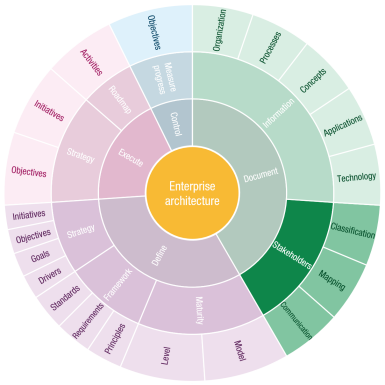The stakeholder concept is fundamental to representing an individual, group, or organization that has an interest in the outcome of an architecture effort. Stakeholders are critical to the success of any Enterprise Architecture initiative because they provide input, have concerns, and influence decision-making throughout the architecture development process. Enterprise Architects use the stakeholder concept to identify and analyze their concerns and interests. Understanding stakeholder needs and expectations helps define architecture requirements and ensures that the architecture effectively addresses business goals.

Gathering information
Stakeholders are actively involved throughout the architecture development process. Therefore, Enterprise Architects work with these key users to gather information, obtain feedback, and validate architectural decisions. As a result, effective stakeholder engagement leads to a shared understanding of business goals and ensures buy-in for the proposed architecture.
Communication
Being able to communicate properly with stakeholders – the key players within the organization – is essential. To identify these key players in an organization, stakeholder management can be applied. Stakeholder management is the process of identifying and understanding the needs, interests and expectations of an organization’s various stakeholders, and planning and implementing actions to address those interests and improve cooperation and communication with them.
In the context of the TOGAF Standard, stakeholder management is an essential part of Enterprise Architecture development and is explicitly reflected in what the framework calls the Architecture Development Cycle1. Stakeholder management is one of the most important factors in the success of an Enterprise Architecture initiative.
Architecture artifacts and deliverables
The first and most important part of stakeholder management is identifying stakeholders and their roles and responsibilities. After identifying stakeholders, the architect must analyze these groups to understand their needs and expectations. Stakeholders are then classified. This classification is best done based on the level of power and influence they have and the level of interest and/or involvement. Stakeholders are then mapped based on their classification, as well as their key concerns. Finally, a communications plan is drawn up. This will allow an Enterprise Architect to communicate the architecture with the stakeholders.
- This refers to an iteration through the Architecture Development Method (ADM). ↩︎

